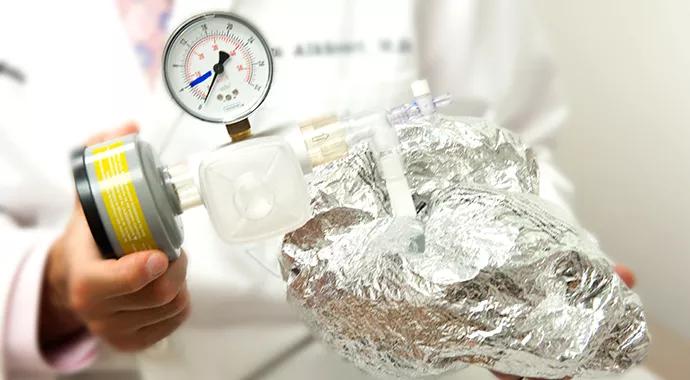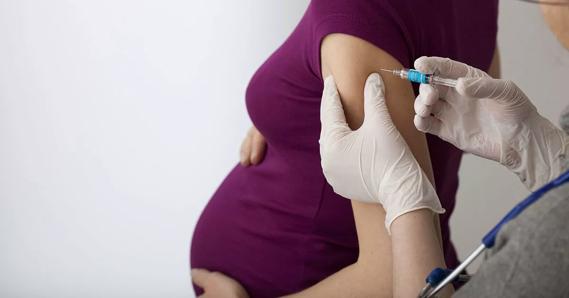Exhaled breath analysis shows promise for noninvasive diagnosis

By Naim Alkhouri, MD
Advertisement
Cleveland Clinic is a non-profit academic medical center. Advertising on our site helps support our mission. We do not endorse non-Cleveland Clinic products or services. Policy
Imagine a noninvasive, painless and easy test that can tell if an obese child has fatty liver disease. Establishing such a test was our team’s objective when we took advantage of recent advances in breath testing to investigate novel biomarkers for nonalcoholic fatty liver disease (NAFLD) in obese children.
NAFLD is the most common form of chronic liver disease in childhood, affecting up to 50 percent of obese children. It is the hepatic manifestation of metabolic syndrome and should be suspected in all overweight or obese children and adolescents.
The spectrum of NAFLD ranges from simple steatosis to nonalcoholic steatohepatitis to fibrosis and eventually cirrhosis and its complications. The diagnosis of NAFLD relies on blood testing, imaging studies and liver biopsy. In view of the childhood obesity epidemic sweeping our nation and the high prevalence of NAFLD, noninvasive methods of identifying children with NAFLD are urgently needed.
The human body emits a wide array of volatile organic compounds (VOCs) in the breath that can be considered the “breath prints” of each individual. Pathological conditions such as obesity and NAFLD can lead to production of new VOCs or a change in the ratio of VOCs that are produced normally.
Technological advances in breath testing and analysis through gas and liquid chromatography and mass spectrometry have made it possible to identify hundreds of VOCs in the breath. Breath testing offers major advantages in children because it is noninvasive and safe and because serial measurements are easy to obtain.
Advertisement
Patients for our study were recruited from Cleveland Clinic Children’s Pediatric Preventive Cardiology and Metabolic Clinic, which was established in 2008 to evaluate and manage overweight and obese children for obesity-related comorbidities.
Using selected ion flow tube mass spectrometry, our team analyzed exhaled breath from 37 obese or overweight children with NAFLD and 23 obese or overweight children without NAFLD. The children were asked to complete a mouth rinse with water before the exhaled breath collection to eliminate mouth sources of certain VOCs.
Next they were asked to inhale to total lung capacity and then exhale into a collection bag against 10 cm of water pressure at a constant flow. The bag was taken to the laboratory and the analysis was completed using the mass spectrometry machine.

Figure 1. Dr. Alkhouri with the selected ion flow tube mass spectrometry equipment used to analyze volatile organic compounds in children’s breath.
We found distinctive breath prints among children with NAFLD, as the concentrations of more than 15 VOCs differed significantly in these children relative to those without NAFLD. Further analysis revealed that concentrations of all the following compounds were significantly higher in children with NAFLD:
Advertisement
We also developed a predictive model that included a number of the VOCs and correctly identified 90 percent of the children with NAFLD (P < .0001).

Figure 2. Sensitivity and specificity results from the study. Breath testing can identify obese children with NAFLD with 90 percent accuracy.
Our findings were presented at Digestive Disease Week 2013 and recently published in full-article form.
Exhaled breath analysis is a promising noninvasive method of detecting NAFLD in obese children. We hope our findings will ultimately help permit early detection of NAFLD and enable physicians to create tailored early intervention plans (in terms of lifestyle, diet and physical activity) to fight this epidemic one child at a time.
Dr. Alkhouri (alkhoun@ccf.org) is Clinical Director of Cleveland Clinic Children’s Pediatric Preventive Cardiology and Metabolic Clinic and Director of Research in the Department of Pediatric Gastroenterology.
Advertisement
Advertisement

Smart phones and other mobile devices put Healthcare right at your fingertips.

Women most likely to move past hesitancy upon advice by their doctors

Substantial increase in outpatient virtual visits in 2019

How we are empowering caregivers

Not all physician burnout is the same

Several clinical studies underway at Cleveland Clinic

5 noteworthy details about Avon Hospital

Key Takeaways from Day 4 at 2016 Event in Cleveland